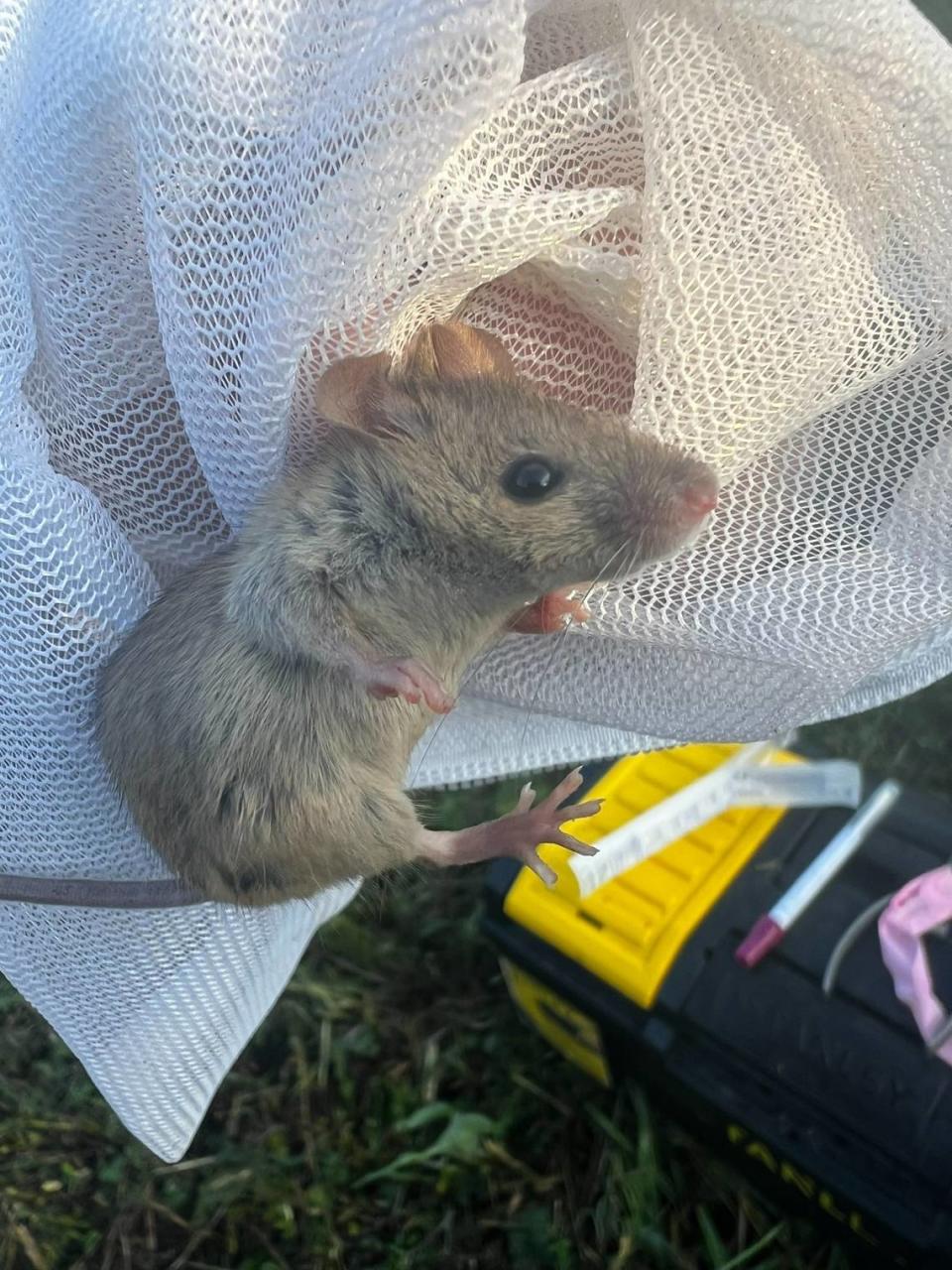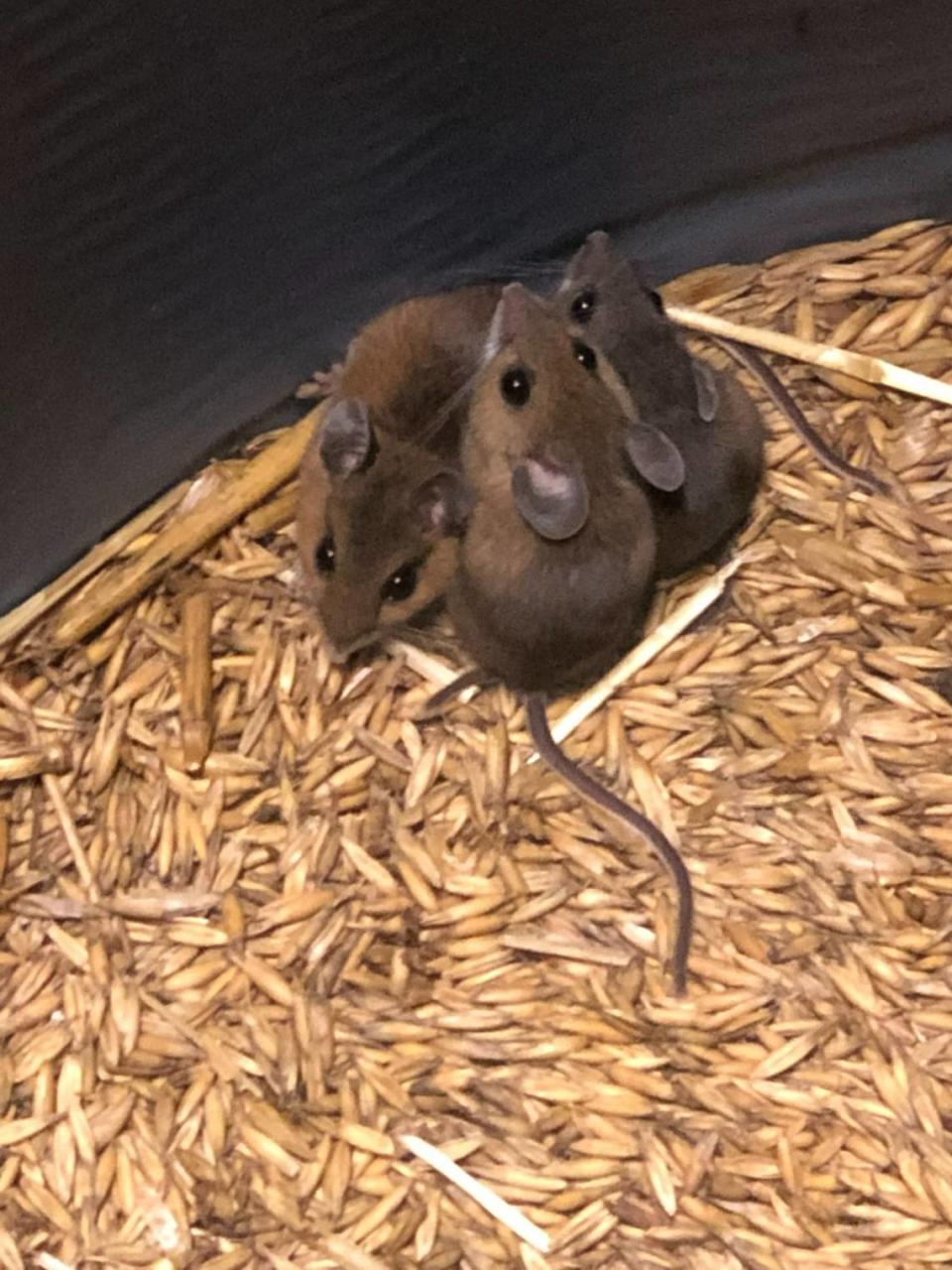How to know if you have mice in your house + how to keep them out this fall and winter
This fall, you might find some tiny creatures stirring inside your house. They’ll probably be house mice.
In speaking with an expert — Michael Cove, research curator of mammalogy for the NC Museum of Natural Sciences in Raleigh — we learned that house mice don’t just like to cozy up in your home in the winter. That’s a common misconception.
In fact, these mice are looking for food and shelter in homes year-round. You’re just more likely to see them in the cool weather months because the mice can find more resources inside your home than out in nature, so they’re sticking around a bit longer than they would when it’s warmer outside.
“I’ve lived in four houses over the course of my time in the Triangle, and I’ve had to remove mice, at some point, from all of them,” Cove said.
“This is not an issue where people are irresponsible with food storage or have gaping holes on the outside of their homes. It’s an ubiquitous issue and will happen to pretty much everyone at some point.
“House mice are really common, but you don’t want them around.”
Here’s what to know about keeping out the house mice this fall.
What are house mice?
The house mouse is a non-native mouse species that lives on all seven continents.
They are originally from Europe and have evolved over thousands of years to coexist with humans and mooch off of our resources, Cove said.
“As the name suggests, they have co-evolved with humans and followed us around the globe. Basically ever since the dawn of agriculture, when humans started storing crops.”

Are house mice only in our homes when it’s cold?
Typically, no.
House mice are common in North Carolina homes year round, not just in the cool months.
“House mice are really good at capitalizing and finding resources, especially in our homes, since they don’t mind humans. They know that humans equal food,” Cove said.
In the spring and summer, they are often outside, benefiting from the resources of nature. But in the fall and winter, they spend more time inside and hunker down.
Are house mice bad for your house?
Yes. Don’t let the name fool you — the house mouse is an invasive species that is a pest to us in North America.
They have the capacity to carry diseases and cause food waste.
“That’s the important thing I like to showcase — when people think of mice or rodents, they think of these pests in houses. But we have dozens of native mice species here in North Carolina that don’t come in our homes or come anywhere near our homes,” Cove said.
The white-footed mouse is presumably the most numerous native mammal in our state, and they much prefer woodpiles, forests and field edges than our homes, Cove said.
While these native species can sometimes get into homes and garages too, house mice are a much more common issue.

How do I know if I have mice in my home?
Here are some signs, according to Modern Pest, a national pest control company:
You hear squeaking and scurrying in walls and ceilings.
There’s a musky odor.
Droppings and urine stains are present. Common areas to find these are kitchen drawers, under stoves and under sinks near the plumbing.
Tracks are visible on dusty surfaces. Not just footprints, but tail marks too.
Smudges are present on structures like walls, pipes and beams.
You can see gnawing on doors, corners and other materials.
You find piles of wood shaving from the gnawing.
(Source: modernpest.com/blog/are-mice-moving-into-your-home-for-the-winter)
How can you get rid of house mice in your home?
• Seal holes (even the tiny ones): Use expanding foam and caulk to ensure these small spaces are blocked off. But remember, mice are tiny, and they can fit into the smallest of holes.
“Mice are incredibly squishy. If they can fit their head through a hole, they can contort the rest of their body through that same hole,” Cove said.
“You’d be amazed by the tiny gaps they can get into. Attics, basement windows and garages are common, as well as HVAC systems or propane tanks that have pipes and wiring connecting a system from outside to inside the house.”
• Lock up your food: Air-tight containers and other hard packaging can help keep mice out of your food (and bar them from coming back).
They often go after pet food, which can be in an easily chewable bag in the pantry or even left out for hours during the day.
“Rodent means constant gnawing. They chew through a lot of stuff, it’s just what they do,” Cove said.
“They’ll go after cereals, grains, breads, even produce. So it’s not a bad idea to do a quick inventory of your pantry to make sure flour bags and boxes of dried goods don’t have some holes in the back of it.”
• Set traps: Cove recommends snap traps over live traps.
“These are non-native pests, so the reality is the best thing to do is use a lethal trap. I suggest snap traps, which are the classic mouse traps with blocks of cheese on them in cartoons, because they are much more humane than alternatives,” Cove said.
Live traps don’t kill the mice, but it becomes your responsibility to euthanize or release them. But the issue with that, Cove said, is that they’ll likely come right back inside.
• Use natural deterrents: Strongly spiced, highly concentrated oils work well here. Clove, peppermint and cinnamon oil are commonly used to keep mice away.
Apply these oils to the outside areas of your home, such as where the HVAC system connects inside. These are the spots house mice are likely to crawl inside and begin nests.
Poisonous solutions are typically bleach and ammonia, but Cove doesn’t recommend using those. (See below.)
• Avoid using poison: This is a bad idea for a few reasons, Cove said.
1. You can’t control where the mice die. They’ll likely bring poison baits back to their nests, which you can’t see. In this situation, you’d probably wind up with dead mice in your walls, Cove said.
2. These products are bad for the environment and native ecosystems. Rodenticides often end up in the environment, which can negatively influence wildlife that consume rodents.
Where do copperhead snakes go when the weather turns cool in NC? We asked the experts
I came face-to-face with a copperhead, so I called a snake catcher. Here’s what happened

